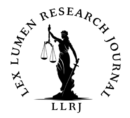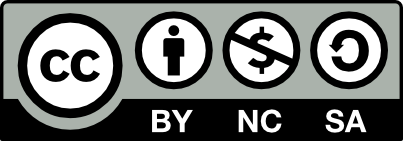Written by Koushik A,
Intern-Lex Lumen Research Journal,
June 2025
INTRODUCTION
Artificial intelligence (AI) is transforming the industry to the extent that machines can write stories, create paintings, and design new products. According to experts, the global AI market is projected to grow by 35.9 per cent compound growth rate (CAGR) annually to reach USD 1,811.75 Billion by 2030, up against USD 229.75 Billion in 2020. This rapid development has triggered the debate over the ownership of the AI generated content[1]. The existing laws in India including Copyright act of 1957 and patents act of 1970 demand a human author or inventor, which contravenes AI-generated work. The same problem appeared in the Naruto v. Slater, in which the selfies of a monkey were not granted a copyright2. This article examines the IP problem in India and global precedents, economic and moral issues, and the options which could be implemented that are going to safeguard innovation as well as the rights of creators.
COPYRIGHT CHALLENGES IN INDIA
According to the Indian Copyright Act of 1957, the author has to be a natural person. The problem with that rule is that it raises questions about AI-made works, such as a painting created using Midjourney[2]. According to the case Kristina Kashtanova v. U.S. Copyright Office (2023) in the U.S., the copyright can only be obtained on the human-created component of an AI-aided graphic novel and that the human authorship is a fundamental limitation to copyright[3]. In India this implies that pure AI produced works are unlikely to obtain copyright. Nevertheless, any human input, including specific instructions or corrections, might be safeguarded by the copyright law, under Section 2(d).
One of the cases is ANI Media Pvt Ltd v. Open AI Inc, which was still pending in the Delhi High Court as of June 2023. ANI accuses OpenAI of training ChatGPT on its news without consent and points at the issue of fair use under Section 52 of the Copyright Act. The case may influence the way AI training data will be handled in India similarly to international conflicts such as Authors Guild v. OpenAI (ongoing, 2025), that also deals with the same ethical and legal issues. These examples put emphasis on the need to have clarity on the position whether training AI using copyrighted material amounts to infringement or is a legitimate exercise.
PATENT LAW AND AI INVENTIONS
According to the Patent Act of India of 1970, inventors have to be natural people. This makes AI systems not be inventors[4]. The U.S. ruling Thaler v. Vidal (2022) defended this rule and said that the AI system DABUS could not be an inventor since “inventors have to be people, that is, human beings”[5]. However, when human beings apply AI as an instrument, they may patent inventions in case of a meaningful contribution, including the design of experiments in
AI-based drug discovery. The contrary was the case in the UK in the Emotional Perception AI Ltd v. Comptroller-General (2023), and did not completely ignore the possibility of artificial neural networks being patentable, at least insofar as they satisfy the novelty and inventive step criteria, and so adopts a more permissive stance[6]. Such flexibility could also be beneficial to the pharmaceutical industry of India, which is the global leader in the generics market, since drug discovery based on AI applications is questioned in terms of patentability[7]. In the Ayyangar Committee Report (1959) there is a suggestion that the word person in patent law may cover non-human things, but that has still not been tried out in the case of AI.
NARUTO V SLATER AND GLOBAL PERSPECTIVES
The Naruto v Slater case (2018) is an example of why AI debates are significant. the U.S. denied copyright to selfies taken by a monkey, which the court explained by stating, “the provisions of copyright law… imply humanity”. This decision compares to the position of AI as it is not a legal person, which implies that the works that are generated entirely by AI in India can become a part of the public domain, which can be a deterrent to innovation. These problems are being attempted to be resolved through global discussions. Global efforts, one of them is the World Intellectual Property Organization (WIPO) 2024 aim of achieving harmonization of AI and IP law. The EU’s AI Act 2024, includes Intellectual property regulations that can be used as a model for India.
ECONOMIC AND ETHICAL IMPLICATIONS
Economically, the development of AI is focused on the Global North, which may increase the technological divide between the North and the Global South, to which India belongs[8]. The
information and communication technology (ICT) sector in India places it in a position to take advantage of AI with the need of stronger IP laws to stimulate investment and safeguard homegrown IP. The estimated USD 1.8 trillion AI market in 2030 presents an opportunity in such areas as healthcare and manufacturing, on the condition that the legal uncertainties are addressed[9]. Ethically, this is not fair to use copyrighted data that can be used in training AI. Such cases like ANI v. OpenAI and Authors Guild v. OpenAI highlighted the issue of conflicts between AI innovation and rights of creators[10]. India should make sure that its legal regulation provides the safety of creators and contributes to the development of technology[11].
PROPOSED REFORMS
The rise of the AI market in India requires revised IP systems. Suggestions to give AI-generated works sui generis protection like databases such as or to redefine authorship to include products of AI. International standardization WIPO could equalize AI-IP laws, and India will not lose the competition[12]. The AI Act proposed by the EU provides an example of how to fit in IP protections on AI regulation[13]. India might also have relied on its own legal tradition, e.g. the Anand v. Deluxe Laboratories (1971), that elucidated authorship when it comes to creative works to inform AI-related reforms[14].
CONCLUSION
The innovative possibilities of AI threaten IP legislation in India because they have been encountered in instances, Kristina Kashtanova, and Naruto v. Slater. Although human centric laws do not cover pure AI-generated content, human-AI collaborations have a chance to be covered in case human contribution is substantial. With the increased AI market in India, new structures such as sui generis rights and international harmonization are required to ensure harmonization between innovation and creator rights to place India in the best position going into the AI age.
REFERENCES
KRISTINA KASHTANOVA V. S. COPYRIGHT OFFICE, 2023 WL 5333236 (D.D.C. 2023).
ANI MEDIA PVT LTD V. OPEN AI, DELHIHIGHCOURT, ONGOING AS OF JUNE
NARUTO V. SLATER, 888 3D 418 (9TH CIR. 2018).
THALER V. VIDAL, 43 4TH 1207 (FED. CIR. 2022). 3
EMOTIONAL PERCEPTION AI LTD V. COMPTROLLER-GENERAL,[2023]EWHC2948
(CH).
PARK, G. (2024). AI AND INTELLECTUAL PROPERTY: NAVIGATING THE FUTURE OF INNOVATION. JOURNAL OF LAW AND ECONOMICS, 57(3), 123–145.
DAVE, (2024). ARTIFICIAL INTELLIGENCE AND INTELLECTUAL PROPERTY IN INDIA.
INDIAN JOURNAL OF LAW AND TECHNOLOGY, 15(2), 45–67.
GLOBAL AI MARKET SUMMARY, 2024–2030. MARKET RESEARCH REPORT.
WORLD INTELLECTUAL PROPERTY ORGANIZATION. (2024).AI AND IP: POLICY AND LEGAL FRAMEWORKS. WIPO PUBLICATION.
EUROPEAN COMMISSION. (2024). AI ACT: ENSURING IP PROTECTION IN THE DIGITAL AGE. EU LEGISLATION.
ANAND V. DELUXE LABORATORIES, 1971 AIR 1132 (SUPREME COURT OF INDIA).
NOVARTIS V. UNION OF INDIA, 2013 AIR SC
AUTHORS GUILD V. OPENAI, ONGOING AS OF
[1] Global AI Market Summary, 2024–2030. Market Research Report 2 Naruto v. Slater, 888 F.3d 418 (9th Cir. 2018).
[2] Dave, K. (2024). Artificial Intelligence and Intellectual Property in India. Indian Journal of Law and Technology, 15(2), 45–67.
[3] Kristina Kashtanova v. U.S. Copyright Office, 2023 WL 5333236 (D.D.C. 2023).
[4] Supra 3
[5] Thaler v. Vidal, 43 F.4th 1207 (Fed. Cir. 2022).
[6] Emotional Perception AI Ltd v. Comptroller-General, [2023] EWHC 2948 (Ch).
[7] Novartis v. Union of India, 2013 AIR SC 1311.
[8] Park, W. G. (2024). AI and Intellectual Property: Navigating the Future of Innovation. Journal of Law and Economics, 57(3), 123–145.
[9] Supra 1
[10] Authors Guild v. OpenAI, 2025.
[11] Supra 3
[12] World Intellectual Property Organization. (2024). AI and IP: Policy and Legal Frameworks. WIPO Publication.
[13] European Commission. (2024). AI Act: Ensuring IP Protection in the Digital Age. EU Legislation.
[14] Anand v. Deluxe Laboratories, 1971 AIR 1132


